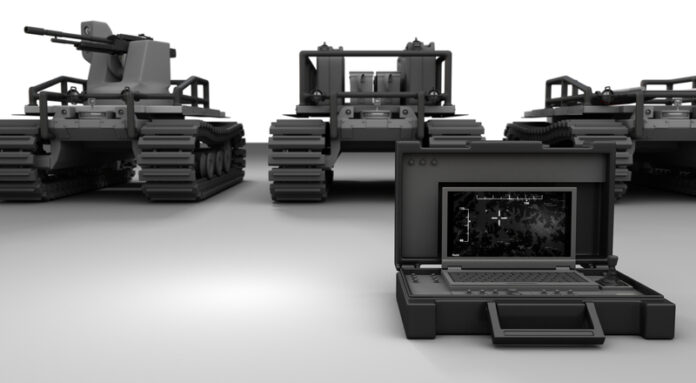The word “roboticized” in the title of this article is a term that describes how we are increasingly integrating robots into our lives. From the simple robot vacuum cleaner we have had for several years to humanoid robots, cobots, and robotic arms working in assembly lines, factories and warehouses, intelligent machines are already changing how many of us work and interact.
We have witnessed in the current wars being fought in Ukraine and Gaza the increasing use of drones and uncrewed aerial vehicles. That’s why when the former chair of the U.S. Joint Chiefs of Staff, General Mark Milley told an Axios Future of Defense event that up to one-third of the American military will be roboticized within the next 10 to 15 years, should we be surprised?
Milley described using robots in the military as “a fundamental change” and that “other nations’ militaries are going to be similarly designed.” He believes human troop numbers will fall as autonomous weapon systems are introduced into land, water and air battlefields. From autonomous field artillery and rocket launchers to crewless tanks and pilotless fighter jets, future wars will be fought by fewer humans connected to robots linked together by fast decision-making software.
Does that mean we are entering the age of killer robots? At least for the American military, this is not the case. The U.S. military has a stated policy appearing in a document entitled, Responsible Military Use of Artificial Intelligence and Autonomy. No U.S. robot will make killing decisions when confronting humans. Only a human operator will have the ultimate say in pulling a trigger, launching a rocket or deploying another weapon.
Sooner than the deploying of killing robots will come field support robots. These will ferry supplies to a battlefield and take the injured away for treatment. Big Dog, a robotic pack mule developed by Boston Dynamics is a good example, a robot that can operate autonomously and carry heavy loads across rough terrain.
The Current State of Roboticized Military Equipment
Military robots today come in many forms:
- Unmanned Ground Vehicles (UGVs) like the Ripsaw M5.
- Their Quadruped cousins (Q-UGVs) such as the aforementioned Big Dog.
- Unmanned Aerial Vehicles (UAVs) such as the MQ-28 Ghost Bat and other drones.
- Unmanned Underwater Vehicles (UUVs) like Kraken Robotics Thunderfish.
- Unmanned Surface Vehicles (USVs) like the Magura V5 sea drone that has been used to sink 5 Russian Black Sea warships.
Boston Dynamics’ Robo-Dog, the quadrupedal robot frequently seen in YouTube videos has been the inspiration for Q-UGVs armed with guns and other ordinances and guided by artificial intelligence (AI), digital imaging systems to detect and track people, drones, or vehicles, and report potential targets to remote human operators located anywhere in the world. The U.S. Marine Forces Special Operations Command (MARSOC) has been evaluating Q-UGVs armed with guns and rocket launchers for future war zone deployment.
The Ethics Of Deploying Killer Robots
Even with human operators, the prospect of deploying armed robots on battlefields raises significant questions about the future of conflicts and the potential risks and ethical implications of autonomous weapons systems. Beyond their military use, it isn’t a a stretch to see these types of robots being deployed by police forces such as what caused an uproar in San Francisco in 2022 when its city Board of Supervisors approved their use in urban conflict zones.









